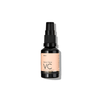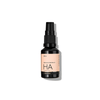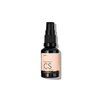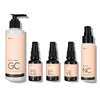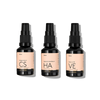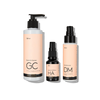How does Microdermabrasion work?
Microdermabrasion is an exfoliating facial treatment, which is typically performed by a handheld device that removes the top layer of the skin.The process encourages cell turnover, to reveal a new layer of healthy skin. The traditional microdermabrasion facials methods are performed in-salon, by spraying super fine crystals onto the skin.
The exfoliated skin particles and used crystals are simultaneously vacuumed away through the same wand. The crystals may be too harsh on the skin and can cause inflammation.
Laser-cut diamond heads have become increasingly popular in the past few years as a crystal-free method, as they are easier to control, minimize irritation and can be used on areas close to eyes, nose and mouth.
Microdermabrasion Devices
Whilst microdermabrasion is typically an in-salon treatment, the innovation of microdermabrasion devices has made the treatment increasingly popular. These devices allow users to perform microdermabrasion facials on themselves, in the comfort of their own home, and without the expense of salon treatments.
Microdermabrasion devices are designed to be used comfortably and efficiently at home and use diamond heads, which are ideal for at-home use as there is no residue.
Using both suction and abrasion, the device stimulates collagen regeneration, breaks up stratum corneum (the outermost layer of the skin) and stimulates blood flow aiding in the regenerative processes of the skin.
As the healthier cells rapidly reproduce, the epidermis becomes stronger and thicker. During this process, the collagen fibers, which are made up of fibroblasts are increased and tightly packed together.
The number of elastin fibers are also increased and vertically orientated instead of horizontally, giving the dermal layer more elasticity. Building a new layer allows hydrating moisturizers to deeply penetrate all the layers of the skin, without the barriers of the dead skin cells.
Studies of microdermabrasion have shown it to trigger the same skin restructuring process which occurs for wound healing. The skin’s markers which fight infection (cytokeratin 16), control skin’s structural protein (matrix metalloproteinases) and the foundations of healthy skin (collagen precursors) all reproduce during the microdermabrasion process.
The devices come with separate attachments, which are designed to cater to all skin types with different areas of concern. No two skins are the same, therefore, these attachments cater to different coarseness and depths of resurfacing.
Our skin is affected by hormones, diet and weather, and thus changes our skin concerns on a daily basis. Having separate attachments means that the user is able to use it as their skin changes. Those with oily skin who require the most intense option for deep blackhead extraction and oil control are still able to use the device if their skin suddenly switches to dry and sensitive.
Microdermabrasion devices have become increasingly popular since their first development in 2003. Microdermabrasion devices offer the benefits of in-salon treatments such as shrinking pores, reducing the appearance of wrinkles and exfoliating dead skin, without the price tag of spa treatments.
The convenience of the device means that the user can undergo clinical treatments from the comfort of their own home and under their control. Diamond tips can be sterilised at high temperatures, making them easy to clean and generally don’t leave your face irritated so there is usually minimum recovery time.
Note: Microdermabrasion cannot rid your skin of severe scarring or dark spots as it only affects the top layer of skin and cannot reconstruct the epidermis like laser surgery.
Tips to follow when using a microdermabrasion device
- Start off by using the device once a week, once there is a visible improvement, treatments can be reduced to 1-2 times per month.
- If concerned about redness, the best day to perform the treatment is when you don’t have anywhere to go to give your skin a few hours to settle down.
- Thoroughly cleanse your skin before each treatment to ensure you’re working with a clean base.
- Avoid sun exposure for 48 hours after the treatment by wearing spf and shading your face.
- Choose the right speed for your skin, the lower levels are advised for individuals with sensitive skin, and higher levels for a more aggressive treatment. Everyone’s skin will react differently and thus all first-time users should start on the lowest setting.
- Carefully follow the instructions when perform the treatment as all devices operate differently.
- Apply an oil-free moisturizer after the treatment to decrease the skin’s recovery time.
- Replace the filter in your machine after every few uses and clean after every use.
